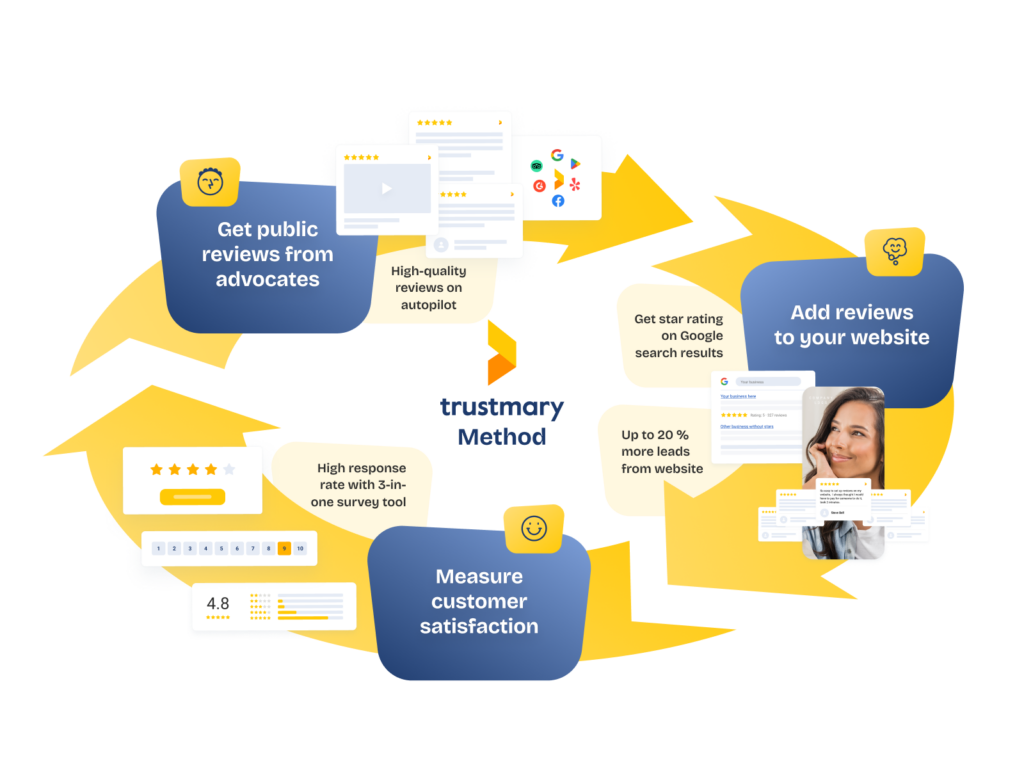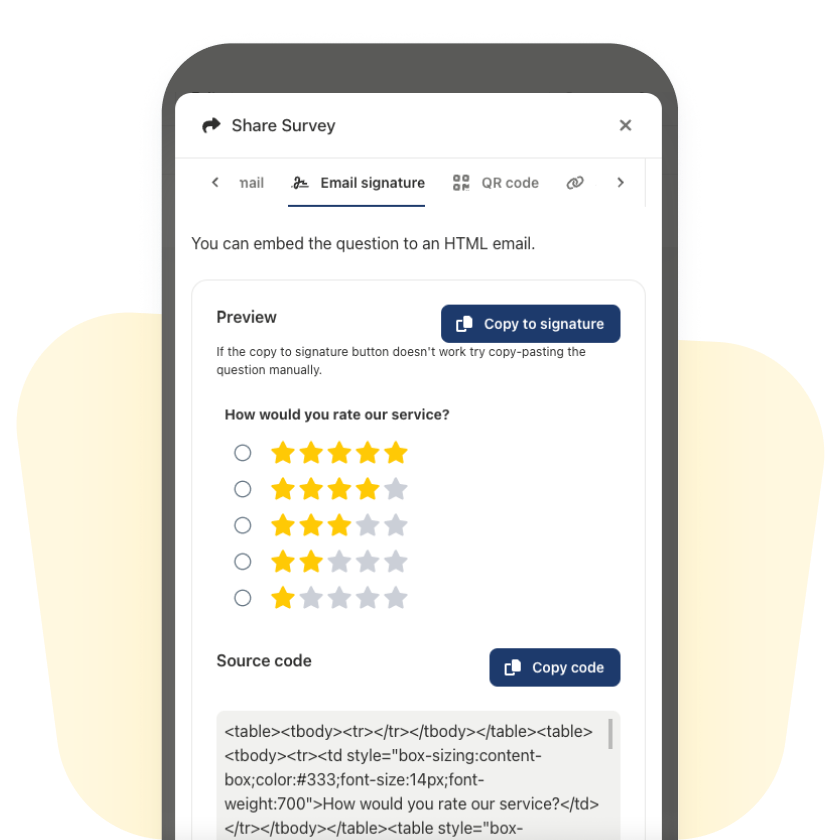Customer Review Analysis: Basics Explained


Customer reviews are a goldmine of customer insight.
Whether you're gathering feedback from Google, Trustpilot, or as first-party reviews, analyzing customer reviews can help you turn raw opinions into useful data for improving your business.
In this post, you'll learn how to
- Analyze online reviews
- What tools to use, and
- How to take meaningful action based on what your customers are saying
Why You Should Analyze Online Reviews
Reading reviews one by one can give you a general idea of how customers feel.
Getting a general picture is great, but to make smart improvements, you'll need to analyse customer feedback and reviews systematically.
In addition, once your business grows, manually checking every review isn't practical and will make you focus on individual reviews rather than seeing the bigger picture and trends.
Benefits of Structured Review Analysis
- Spot recurring issues or compliments
- Understand customer sentiment at scale
- Improve your products and services based on real customer feedback
- Share relevant insights across your team for better decision-making
- Seeing the bigger picture
Put simply, review analysis gives you the full picture of your customer experience without the guesswork.
Try Trustmary's free UK review analyser if you operate in the UK market!
AI review analysis and sentiment analysis are viable options, but they should be used methodologically to reach the best results.
5 Steps to Analyzing Customer Reviews
Here’s a clear, repeatable process for analyzing reviews effectively to get those actionable insights.
1. Collect Reviews From Every Relevant Source
Start by gathering reviews from the platforms your customers use the most:
- Trustpilot
- Yelp
- G2
- First-party reviews
An all-in-one review management platform like Trustmary helps centralize all reviews in one place, saving time and reducing the chance of missing important customer feedback.
2. Categorize Responses and Customer Feedback
Once you have the reviews, organize them based on:
- Topic: What are customers talking about (support, pricing, delivery, etc.)?
- Product or service: Which offering is being reviewed?
- Location: If you have more than one location, separate them from one another
Categorizing this way helps you spot patterns faster. It'll help you see trends and implement changes in the areas that need improvement.
Once the initial customer feedback segmentation is done, you can move on to customer sentiment analysis.
3. Use Sentiment Analysis Tools
Sentiment analysis tools automatically detect whether the tone of the review is positive, negative, or neutral. This is helpful when you're working with a large volume of feedback.
It's also great for
Popular sentiment analysis tools include:
- Trustmary (built-in analytics tools)
- Google Cloud Natural Language API
- Lexalytics
These tools use natural language processing to detect emotional tone and summarize trends.
4. Identify Trends and Patterns
Look beyond individual online reviews and focus on patterns.
Patterns to look out for:
- Are multiple people complaining about delivery delays?
- Are certain features consistently praised?
- Is one product rated much lower than others?
- Are there differences between locations?
- Which customer group complains the most?
- Which customer group praises you the most?
Trends like these point to areas that need attention or opportunities to double down on what works.
As a result, you might recognize that the customer group that always has a bad customer experience is also your worst-paying customers. If you stopped working with that segment and focused your energy on a more profitable segment, you'd have more sales and overall better customer satisfaction.
But you'll never know, if you don't collect customer feedback and reviews.
5. Take Action Based on What You Learn
Review analysis is only useful if you do something with the insights. Some examples:
- Send complaints to the product or support teams for resolution
- Use positive reviews in marketing campaigns
- Add new help content to address common complaints and questions
- Follow up with unhappy customers to repair the relationship
Responding to feedback shows your customers that you value their opinions and are committed to improvement.
Even the simple act of responding to negative reviews and improve customer satisfaction.
Recommended Tools for Review Analysis
Here’s a complete table of customer review analysis tools, categorized for easier comparison:
| Tool Name | Category | Description | Best For |
|---|---|---|---|
| Trustmary | All-in-One Review Management | Collects, analyzes, and showcases reviews; built-in surveys and sentiment tagging. | SMBs and marketers |
| Podium | All-in-One Review Management | Google and Facebook review collection, text-based invites, and basic analytics | Local businesses |
| Reputation.com | All-in-One Review Management | Enterprise-level platform with deep review and reputation management features | Large enterprises |
| Lexalytics | Sentiment & Text Analysis | Advanced NLP platform for processing large volumes of text data | Developers and analysts |
| Google Cloud Natural Language API | Sentiment & Text Analysis | Cloud-based API for sentiment and entity extraction | Developers and data teams |
| IBM Watson NLU | Sentiment & Text Analysis | Analyzes emotion, sentiment, and key phrases across reviews | Enterprise data projects |
| TextBlob | Sentiment & Text Analysis | Python library for basic NLP tasks like sentiment scoring | Technical teams and developers |
| Trustmary | Survey-Based Feedback Tool | Collect feedback with an automated flow, built-in feedback analysis tool, and reporting. Omnichannel survey distribution. | SMBs and marketers |
| Survicate | Survey-Based Feedback Tool | Gathers and analyzes customer feedback through on-site and email surveys | Product and UX teams |
| Qualtrics | Survey-Based Feedback Tool | Full-featured experience management platform with advanced analytics | Enterprises and CX teams |
| Typeform + Google Sheets | Survey-Based Feedback Tool | Custom form and spreadsheet setup for lightweight analysis | Startups and DIY setups |
| Trustmary | Visualization & Reporting | Create customer feedback analytics reports to share with relevant stakeholders | SMBs and marketers |
| Power BI | Visualization & Reporting | Integrates with various review data sources for dashboards and insights | Microsoft-based teams |
| Looker Studio (Google Data Studio) | Visualization & Reporting | Free tool for creating dashboards from Sheets or BigQuery data | Marketers and analysts |
You can use this table to match your team’s needs with the right type of tool, whether you want an all-in-one solution, a custom NLP pipeline, or just better visuals for reporting.
Each tool has different strengths depending on your team size and technical capabilities.
Have a look at some alternative pages:
Benefits of Analyzing Customer Reviews
Customer reviews are more than just customer feedback. They’re a direct line into your audience’s thoughts, needs, and expectations.
Even having a simple Google review report can help you get an overview of your online reputation.
By analyzing them systematically, businesses can unlock a range of powerful benefits that influence every part of the organization.
- Product and service improvements
- Better customer experience
- Smarter marketing and messaging
- Stronger reputation and social proof
- Competitive advantage
- Informed business decisions
- Team alignment and performance tracking
Whether you're a small business or an enterprise, the benefits scale with you.
Let's go over the benefits of using review analytics tools together.
1. Product and Service Improvements
One of the most obvious advantages of review analysis is the ability to spot recurring complaints or suggestions. If multiple customers mention that a feature is confusing, unreliable, or missing, that’s a strong signal for your product or service team to act.
Similarly, if certain aspects receive constant praise, you’ll know where to focus your strengths and possibly develop new offerings based on what works best.
For example, electricians doing digital marketing can highly benefit from knowing which aspects their customers loved about their services.
Even more importantly, if the customer feedback constantly mentions workers having dirty shoes on, or arriving late, fixing those issues are easy to fix once a business is aware of them.
2. Better Customer Experience
Analyzing sentiment and review trends helps identify friction points in the customer journey—whether it’s confusing onboarding, poor communication, or slow delivery. Understanding where things go wrong allows your team to respond quickly and improve the experience, which in turn reduces churn and increases satisfaction.
3. Smarter Marketing and Messaging
Review analysis isn’t just for support or product teams. Marketers can pull out common phrases, benefits, and language that real customers use when talking about your brand. This helps improve ad copy, landing pages, and email campaigns. You can also identify key differentiators that set your brand apart in your customers' eyes.

4. Stronger Reputation and Social Proof
Regularly monitoring reviews lets you address negative feedback quickly and publicly, showing that you care and are responsive. At the same time, highlighting positive reviews, especially with customer permission, builds credibility and trust with prospective buyers.
Review analysis also helps you identify which testimonials to feature, and where.
5. Competitive Advantage
Knowing what your customers are saying, and what they’re saying about your competitors, gives you insight into market expectations.
If customers are flocking to a competitor because of faster service or better pricing, you’ll know how to adjust. Benchmarking sentiment and review volume over time can help you stay ahead.
6. Informed Business Decisions
Aggregated review data supports more strategic decision-making. Whether it's deciding to discontinue a product, refine a feature, train your support team differently, or shift brand messaging, decisions are better when backed by consistent, real-world feedback.
7. Team Alignment and Performance Tracking
Review insights can be used to track internal performance too. For example, if your support team consistently receives positive mentions, that's a clear sign of success. Likewise, new product releases or service changes can be evaluated based on review trends before and after launch.
What Is the Best Review Collection Flow?
Collecting customer reviews isn't just about asking at random. The best results come from a structured flow that fits naturally into your customer journey—and one that’s easy for both your team and your customers.
Based on real-world results from Trustmary users, here's a proven review collection flow that delivers both volume and value.
A nice added bonus is that the best review tools help make reviews AI-friendly. This means your reviews are put online in a way that enables AI search engines, like ChatGPT, to read them and include in their answers about your business.

Step-by-Step: A Proven Review Collection Flow
1. Automate the Timing of the Ask
The ideal moment to request a review is shortly after a successful interaction, such as:
- A completed purchase
- Delivered service
- Closed support ticket
Real-life B2B Example: Saintex
Saintex integrated Trustmary with their CRM and sent automated review requests via email. Within 30 minutes, they received hundreds of B2B customer reviews, without any manual outreach.

2. Personalize the Message
Make the request feel human and specific:
- Use the customer's name
- Mention the product or service they used
- Keep the tone friendly and appreciative
Trustmary’s system allows users to customize email and SMS templates to make every message feel relevant.
3. Use Omnichannel Outreach
Don’t limit yourself to just email. Use multiple channels to improve response rates:
- SMS
- On-site popups
- QR codes on packaging or invoices
4. Make It Easy to Respond
A long or complicated feedback form will kill your response rate. The best review forms are:
- Mobile-friendly
- Short (1-3 questions max)
- Include a star rating or NPS question
- Optional open text for detailed feedback
Trustmary’s survey format allows customers to start answering right inside the email, reducing the number of total clicks to complete the survey.

5. Ask for Publishing Permission
Don't just collect reviews, ask if you can use them publicly. This gives you the green light to use them on:
- Landing pages
- Social media
- Sales presentations
B2C Example: Hohdepinnoitus
Hohdepinnoitus collected feedback for internal improvement and used the best reviews with permission to boost trust and generate leads on their website.
The company also uses reviews and customer feedback to determine which employees are given bonuses.
6. Monitor and Optimize
Keep track of:
- Response rates by channel
- Review quality and length
- Opt-in rates for publishing
Based on this data, you can tweak messaging, timing, and channels for better performance over time.
Summary: What the Best Review Collection Flow Looks Like
| Step | Key Tactic | Why It Works |
|---|---|---|
| 1. Timing | Automate after service delivery | Catches customers while the experience is fresh |
| 2. Message | Personalize content | Increases engagement and trust |
| 3. Channels | Use email, SMS, and web | Reaches more customers where they are |
| 4. Simplicity | Keep the form short | Reduces drop-off |
| 5. Permissions | Ask to publish reviews | Turns private feedback into marketing assets |
| 6. Optimization | Track and improve | Keeps your flow efficient and effective |
By following this flow and learning from companies like Hohdepinnoitus, Saintex, and Wannado, you can build a consistent pipeline of valuable customer feedback that fuels trust, improves your offering, and supports your growth.
FAQ: Customer Review Analysis
What is customer review analysis?
It is the process of collecting, sorting, and interpreting customer reviews to find insights that help improve your business.
Why is customer feedback important?
Customer feedback highlights real experiences, making it easier to understand expectations, solve problems, and deliver better results.
How do you analyze customer reviews?
First collect the reviews, then sort them by category and sentiment. Use tools to find patterns and take action on the results.
What tools can be used for sentiment analysis?
Options include, for example, Trustmary, and Google Cloud NLP. These tools automate the detection of emotional tone in reviews.
How do businesses benefit from customer review analysis?
They use the insights to improve customer service, refine products, and build more trust with both current and potential customers.